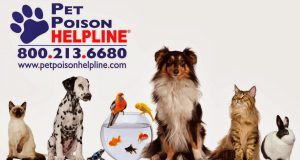A report released by the ASPCA® (The American Society for the Prevention of Cruelty to Animals®), the Animal Poison Control Center (APCC) reveals that human medications once again tops the list of toxins most commonly ingested by pets. Within the human medications category, a majority of cases (4,151) involved cardiac medications used often to control heart rate and blood pressure. The second most commonly-ingested prescription human medications were serotonin and neurotransmitter medications (3,830 cases), followed by pain medications (2,836 cases).
In 2013, the APCC, headquartered in Urbana, Ill., handled nearly 180,000 cases involving pets exposed to possibly poisonous substances. Nearly 20 percent of those calls (24,673 cases) were from owners whose pets got into medicines intended for human use.
“There’s no telling what story you’ll hear when you pick up the phone each day, but when you examine the data, clear trends emerge,” said Dr. Tina Wismer, medical director of the ASPCA Animal Poison Control Center. “Year after year, human medications top our list as the most common reason for pet owners calling our center. Determined dogs have no problems breaking through the pill bottles and swallowing everything inside.”
“Keep all medications out of reach and take your pills behind a closed door away from your pets,” Dr. Wismer advises. “If you drop your medication, your dog can scoop it up quicker than you can say ‘poison’.”
According to the ASPCA, the top ten calls into the APCC in 2013 involved the following toxins, ranked below in order of call volume:
- Human medications topped the list again with 19.8 percent of all calls. The types of medications pets are exposed to seem to correlate with the most popular medications humans are prescribed.
- Insecticides made up about 15.7 percent of the calls to the APCC. These products can be very dangerous if the label directions are not followed.
- Over the counter medications made up 14.7 percent of the call volume. This category includes deadly items like acetaminophen and ibuprofen, but also items like fish oil and joint supplements.
- Household items moved up to number four in 2013 with 9.3 percent of the calls. These items range from cleaning products to expandable glues to paints.
- Human foods are especially appealing to pets, especially dogs. Dogs can get themselves into serious trouble by ingesting onions/garlic, grapes/raisins and xylitol, a sugar substitute which can be life-threatening for animals.
- Veterinary medications slid down two spots this year. People need to be aware that chewable medications are very tasty and pets will ingest an entire bottle if it is not kept out of their reach.
- Chocolate ingestion is very common (this is the only category with one item in it). At the APCC, chocolate calls make up 7.7 percent of their call volume –over 26 calls a day! The darker the chocolate, the more potential it has to do harm.
- Rodenticides are made to kill mice and rats, but they can also kill pets if ingested. About 5.5 percent of the APCC call volume was about these types of products.
- Plants were approximately 5.4 percent of the calls to the APCC. Most of these calls involve cats and houseplants.
- Lawn and garden products round out the top ten, accounting for about 2.8 percent of all calls. Many of these exposures occurred because people did not store these products out of the reach of pets.
For more information about the top toxins, and other household items that could harm your pet, visit www.aspca.org/apcc. If your pet has ingested something toxic, please contact your veterinarian or the ASPCA’s 24-hour APCC hotline at 1-888-426-4435. Since its opening in 1978, the APCC has handled more than two million cases from worried pet owners.
 Dog Living A lifestyle magazine for dog lovers
Dog Living A lifestyle magazine for dog lovers





